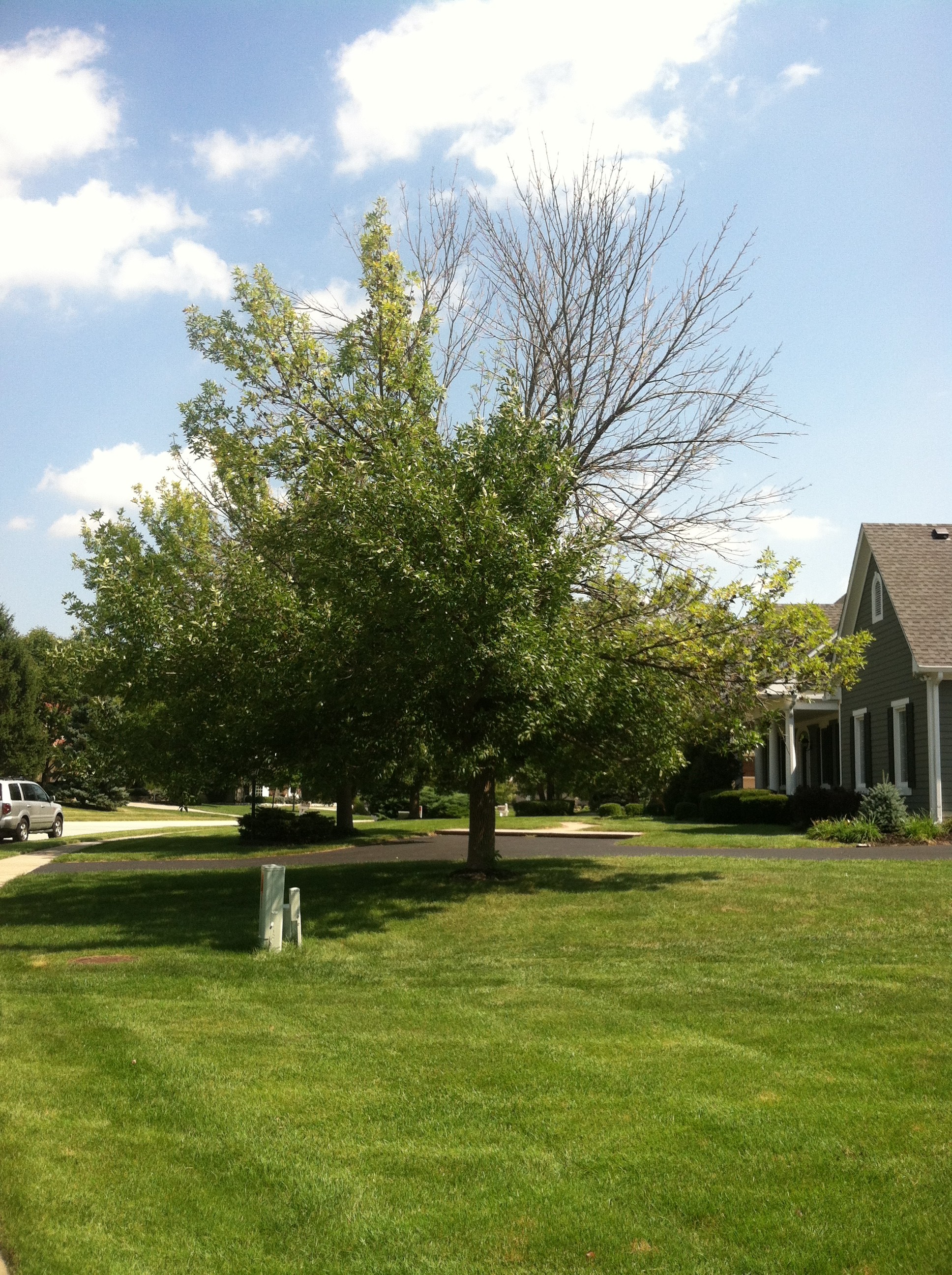Commentary by Kevin Daugherty, a member of the Carmel Urban Forestry Committee
While it might seem like a contradiction in terms, Carmel does have an urban forest. This forest is comprised of all the street trees, parks trees, designated forest preservation areas in some subdivisions; as well as the landscape trees at homes, churches, schools, and businesses.
The Carmel urban forest is an ecosystem which bestows enormous benefits to the citizens of Carmel. It removes carbon dioxide while producing oxygen; it filters dust particles out of the air, reduces storm water runoff during heavy rains, and cools the air and shades the hard surfaces on a sunny day.
Like any ecosystem, it is made up of a variety of flora and fauna (plants and animals). Like the rural forests of the Midwest, a good portion of our urban forest is ash trees. The ash tree has come under attack by the Emerald Ash Borer. It is estimated that we have lost more than half of our ash trees. You may have spotted a dead ash along the road on a neighbor’s yard. Once the tree looks like the one pictured here, it is a goner.
But don’t despair, Carmel is a Tree City USA and has a caring and conscientious urban forestry program within the Department of Community Services. With the urban forestry staff looking out for the health and maintenance of this city asset, Carmel will not become a desert. It also has a small group of caring citizens who make up the Urban Forestry Committee; appointed by Mayor Jim Brainard. As dead ash trees are being removed, new trees are being planted. In the last five years, in spring and fall plantings, the forestry staff and city contractors have managed to plant nearly 2,900 trees in the public spaces.
“Carmel prides itself on its attention to green space and our environment. There is more than simply beauty and shade to a tree-lined street. We realize the important role trees play in cleaning our air, conserving soil and adding beauty and charm to our community by greatly enhancing our quality of life,” Brainard said.
Let’s keep our forest going and growing. Trees are Carmel’s renewable natural resource.
At the opening of the Farmers Market this year, tree seedlings were handed out by the Urban Forestry Committee to those eager to plant and do their part to maintain our tree cover. Selecting, buying, and overseeing tree planting is a big job, but that is not all urban foresters do. The urban forestry staff also makes sure that young trees are watered, and that new residential and commercial development plans get reviewed. Recommendations are submitted to preserve the existing natural forest as much as possible.
The Urban Forestry Committee, on behalf of the urban forestry staff, encourages you to plant trees where you have lost ash trees on your property. If you are in doubt as to whether you have a sick or dying ash, please call a reputable arborist who can assist you with proper tree care. If you need help or advice on selecting a replacement tree, or wanting to know the proper planting instructions, please check out the City’s Urban Forestry web site www.carmelurbanforestry.com for a list of trees suitable for the Carmel area; as well as other useful information regarding Carmel’s urban forest.
Recently, the Secretary of the Interior, Sally Jewel, came to Carmel to see our parks and trails, made possible in part by the Land and Water Conservation Fund. This is a fund that comes not from tax dollars, but from a small assessment taken from the offshore oil and gas revenues in US coastal waters. It helps to fund park projects and park land acquisition all across the US. The Flowing Well city park was made possible by these funds.
“Quality of life has become an important part of Carmel’s success in attracting new corporate headquarters and high-paying jobs. This is why we pay close attention to plans for future growth and maintaining our existing neighborhoods by including the appropriate number and kinds of trees,” Brainard said.



